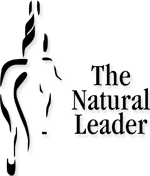“For us to make sense of something it has to fit with what we already believe to be true or the bigger picture.”1
For some that truth is horses are dangerous, for others they are an icon of beauty and freedom. Horses touch our emotions like few concepts or experiences can.
Experiential education is a way to extend truths and engage emotions in learning by doing. The premise, get people out of their comfort zone to access emotions and the corresponding problem solving skills that rarely are generated through reading or listening. Experiences familiar to enhancing leadership learning or team interaction are ropes courses and rafting. Working with a horse represents yet one more option, the key difference being horses introduce the aspect of free will.
A leader must continually manage interpretations and perceptions of both external and internal influences. While height, a rock face or rapids may be a metaphor for the challenges of the workplace, reaction to the obstacle determines the stress we put ourselves in and ultimately the outcome.
As a prey animal the horse’s will is to survive, to do that they are keenly aware of their environment. The metaphor of the horse in leadership, team or change management learning represents the multiplicity of outcomes. Unlike a rope that will hold despite demonstrated fear, a horse may not. It is the relationship you build and the emotional intelligence that you demonstrate that determines the result.
The Equine Guided Education Association holds an annual conference in Valley Ford, California. This year I had the privilege of presenting an example of the work The Natural Leader offers. The focus of the presentation was to demonstrate how horses support emotionally intelligent learning. The Big Picture provides a three-dimensional perspective on the attributes of awareness of self and others.
The Big Picture brilliantly demonstrates how horses quickly reflect our emotions. Observers are given a glimpse as to how emotion and intention might be perceived by others through our actions.
Like any new leader, as I walked through a different herd awareness was on high. When my actions began to demonstrate negative energy and the emotions of anger, disgust or fear the impact on the horses was powerful. My energy represented how we can be so wrapped up in our own thoughts that we can’t see when our actions are perceived differently by others. Inadvertently sending the wrong message.
As I talked through the objectives of the activity bringing my energy down to acknowledge the presence of others and my actions demonstrated the emotions of interest and acceptance. The horses immediately reflected the change and were willing to not only engage but were prepared to accept me.
The Big Picture activity has always brought to attention some of the most meaningful discussion and memorable moments in our programs. Developed from the concepts outlined in the 2001 article The Work of Leadership, the activity offers participants the opportunity to view interaction of the herd before they get into the midst, or as Heifitz & Laurie suggest on to the dance floor.
As a leader we must not only face the external challenges but our own internal ones. Developing our emotional intelligence through active and reflective practice helps us respond better when the stakes are high. By recognizing when and how our emotions are demonstrated through our actions we inspire the will in others.
1. Bushe, Gervase, Clear Leadership
